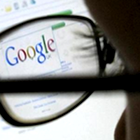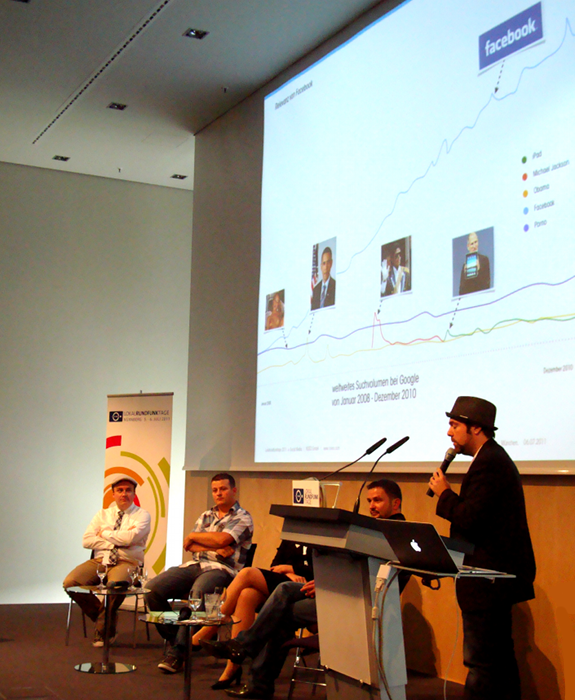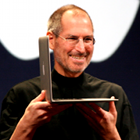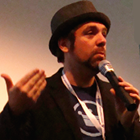The end of radio as we know it, is near. To survive, radio production, advertising and distribution should focus on personality, relevance, and geo-targeting.
According to new media specialist Michael Praetorius, the “attention economy” calls for a different workflow in the radio industry, based on new technology and social media. “In the early days, we printed our logo on bumper stickers that we handed out to the audience. Today, we post on Facebook or YouTube.” Read more about this inspiring session at the German Lokalrundfunktage.
Topics
- The gap between old media content and online audience interest
- Why personalities are crucial to radio stations in this new media world
- How to answer demands of tomorrow’s advertisers and save them for radio
- How to create an efficient workflow for radio content production and advertising
- Why stations should publish content online, and then broadcast a part of it
- How radio survives the rise of online media and death of FM broadcast
 Mainstream media vs. online interest
Mainstream media vs. online interest
“What’s being headlined in tabloids or discussed in classic media, is not necessarily what interests people on the Internet”, Praetorius says. To find out what people care about online, he recommends Google Insights for Search. “You can predict flu epidemics, or do a talk-of-town analysis within the exact geographical area of your radio station. It’s something you should do on a regular basis.”
Internet search traffic trends compared
He illustrates his point by comparing 5 major Internet search traffic topics of the last couple of years:
- Adult content: “for men who are bored”
- Steve Jobs: “reinvented the media world”
- Barak Obama: “the first Internet president”
- Michael Jackson: “broke records during his death”
- Facebook: “that line that goes up…”

Michael Praetorius explains that while while most news events and mainstream media topics show temporary peaks and then fade-out, Facebooks consistently and rapidly grows. It passed adult content in 2007 and also conquered Barak Obama, Michael Jackson, and Steve Jobs in terms of online audience attention (photo: Thomas Giger)
Radio personality is valuable asset
“People that visit Disneyland have not much in common. What unites them is their affection for Mickey Mouse. That’s it. The park spends a lot of money to keep everything in good shape and to add new things to the experience. There are not much brands who can afford that.” Radio stations have a huge benefit over regular brands, because they have personalities. “Do you tune into a brand every morning? No. You are listening to a person; the morning show host.” Praetorius sees social media like an adventurous playground where radio personalities connect themselves to multipliers to network (and make many new friends fast).
 Social media platforms come & go
Social media platforms come & go
“Imagine Lisa, a new girl on the playground. She doesn’t know anybody there. If Lisa says: ‘hey, I’ve got the greatest hits of the 70s, 80s and 90s for you!’ she will probably make no friends. But if she approaches the cool Tom, and starts a conversation by saying ‘hi, what are you playing here, and can I play along with you and your friends?’ Lisa will get along with everyone very easy.” This is the right tone of voice for social media networking.
Radio personalities need social media
It doesn’t matter whether the playground is named MySpace, Facebook or Google+, as “platforms are interchangeable. Skateboarders fancy a different brand of sneakers every five months. But if you produce sportswear, you can’t change your strategy all the time.” Radio needs personalities to represent them in this digital society. Therefore stations should not limit their people in presenting themselves online. “Don’t forbid your personalities to have their private social profiles, because as a listener I might be more fan of Wolfgang Leikermoser as I am of ANTENNE BAYERN.”
 Offer flexible radio advertising concepts
Offer flexible radio advertising concepts
Radio should build standard workflows that integrate content production and ad sales, and work for FM, DAB+, online, and more. “Make content backchannel ready, because advertisers are saying goodbye to traditional radio. Today, sponsors demand user targeting, geo targeting, and conversion tracking – and when the campaign doesn’t work, stop it or change it. They can’t do that in the traditional radio advertising booking system.”
Radio needs user relevant content
“For everything that has made radio cool in the past, there is an app today. I don’t need radio for my information flow. Not for news, weather, traffic, events and not even for music”, Praetorius says. “I’m fed up with stations that just say: you can find more about this on our website. I don’t want more; I want relevant. Facebook is relevant. The number of times that I interact with a brand, determines what Facebook will display on my start page.” That’s why he pleads for another way of content production, using modern technology like an iPhone combined with reporter apps.

Michael Praetorius: “For everything that has made radio cool in the past, there is an app today” (photo: Thomas Giger)
Radio reporter’s new production workflow
Reporters of Radio Arabella 92.9 (Vienna, Austria) can record, edit, and publish content online while being on the road. They save valuable time because they don’t have to get back to the studio, capture everything on hard disk, and then edit and broadcast the material. Instead, they use an efficient workflow for interviews on location:
- Female reporter records an introduction and a question
- Reporter records video vox pops of several different people
- She uploads the footage to the station’s own YouTube channel
- She edits the video online, tags it, and writes a short text introduction
- She publishes the video and all metadata live and direct from the location
- The YouTube content gets automatically integrated in the radio station website
- The presenter in the radio studio can capture the audio track directly from their site
- He reads the introduction from the website and plays a short bit of the reporter’s feature
- He tells the listener that the complete bit can be heard online on the radio station website
Produce content backwards monetizing ready
“We have to think: online and social media first. Don’t make a short edit of a radio interview to post it online and in a way say to your fans: sorry, the whole interview aired this morning – you’ve missed it. That’s total non-sense.” He suggests to post the complete content online first, and then announce it on the radio, play a short clip of it, and send people to the website to hear and see the full version.” The reason is that online, content can be backwards marketed and monetized – combined with user tracking, geo tracking, IP-address filtering, and more.
 Offer multinationals laser target traffic
Offer multinationals laser target traffic
“Radio has lost its distribution monopoly”, Praetorius says. “Brands take over the communication themselves. Apple invites 2.000 journalists for a product demo, but also streams the event. When reporters start to write after an hour, they bring old news; the majority of interested people has seen it! BMW has 4 million fans on Facebook. It’s important for radio to be active on platforms like this.” Local stations could facilitate geo-targeted campaigns for major brands.
Build Facebook communities before launch
Germany has just started Digital Radio Broadcasting. One of the first, nationwide DAB stations is Absolut Radio (not affiliated to the UK station). The Internet will be the station’s main distribution platform in the first year (because in Germany, almost no-one owns a digital radio receiver yet). “A month before the launch, Absolut Radio already had 300 Facebook fans. If they were not active in social media, they would probably have not a single listener on the first broadcast day.”
 Publish on social platforms first
Publish on social platforms first
Absolute Radio’s workflow is web 2.0. Reporters can upload, tag and describe content on location. URL’s are search engine optimized and social media share buttons, Google Maps, and comment fields are fully integrated as well, based on standard templates. “Reporters can keep the website up to date without having to bother with any technical issue; it’s all automated. More work? No. Just a different workflow: social media first.”
Broadcast geo targeted & IP based
What extra value can radio give now – in a dual landscape where FM still rules besides the slowly growing digital radio? Michael Praetorius: “FM radio is dead. Dead, dead, dead! I’ve just seen a Mercedes that has a radio connected to an LTE modem in the trunk. It receives a music stream while I drive on the freeway with 200 km/hour. On the front dashboard, iPhone or Android apps let me choose what I want to hear. And why should I listen to a traffic report mentioning car jams in Düsseldorf, while I’m driving from Munich to Berlin? We have to think of geo-targeted and IP-based distribution. Yes, fax machines still exist, but they’re not relevant anymore.”
 Radio stays personal relevance guide
Radio stays personal relevance guide
“Radio is the acoustic version of information and that’s a good thing. In twenty years from now, people still want to hear things.” Radio is emotional and can be a guide to find content. “My iPod is anything but emotional – I don’t even know what I want to listen to. Radio can tell me what is relevant today, whether it’s through broadcasting, websites or apps. Radio will keep its multiplication function, but it should leave its one-dimensional distribution model.”
Takeaways
How to keep radio relevant in the new media future:
- Use Google Insights for Search to analyze what listeners in your area care about
- Value your radio personalities and let them free to create personal social media profiles
- Discover social media playgrounds and connect to multipliers that have a lot of following
- Improve advertiser service: offer them user & geographic targeting and conversion tracking
- Publish full content online (easier to market and monetize), and put short version on-air
- Focus on relevant (local, or geo targeted) content, and offer guidance to your audience
- Use radio’s strenghts: acoustic information includes emotion and personality
 About
About
Michael Praetorius (Munich, 1978) is an online strategist for TV and radio broadcasters. His company NOEO develops online content and advertising strategies, also for social media. He worked as a teacher for the Bavarian Academy for Advertising and other institutions. Praetorius is a journalist for radio, TV and online media, a video blogger and producer of a media talk event. Besides that, Michael is a “hard core Twitter user” @praetorius.





Add Your Comment